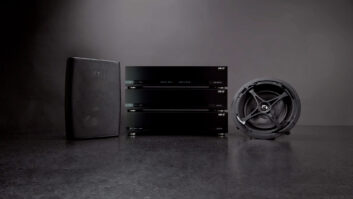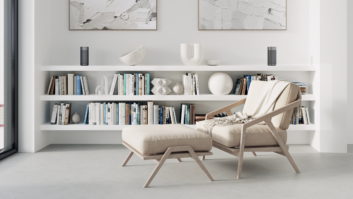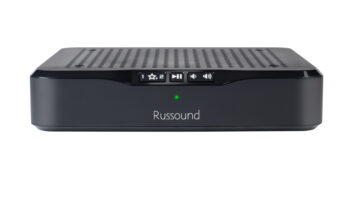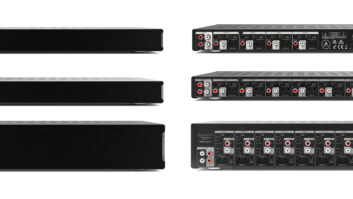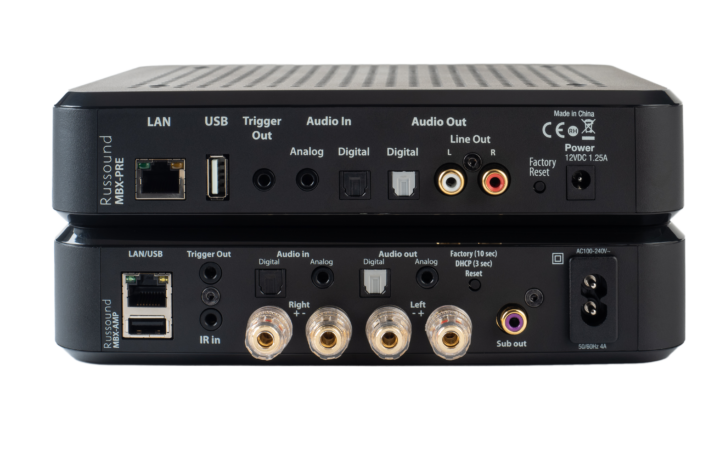
Russound has been a leader in distributed audio systems for years, but the company’s recent product offerings have continued to rely on the “old school” audio distribution model of having a large chassis that accepts multiple analog audio inputs that are then matrixed and amplified to a variety of zones, controlled by a variety of in-wall controllers. While these systems still have their place, the far more modern approach involves scalable systems that can be added in in zones that wirelessly stream a virtually unlimited amount of content via app-based control.
This is the philosophy behind Russound’s new MBX Series, a product family that has been in development for several years.
While MBX shares many similarities with Sonos, HEOS, Bluesound, and MusicCAST systems, it also adds its own twists to the wireless streaming solution, making it attractive for the custom installation market. One of the biggest differences is that Russound doesn’t offer this system for direct sale to consumers, rather making it part of its Russound Certified Installer (RCI) program (more on that later). Russound also doesn’t (currently) offer any kind of all-in-one streaming speaker solution, rather relying on traditional powered speakers such as its own IC-Series of architectural speakers.
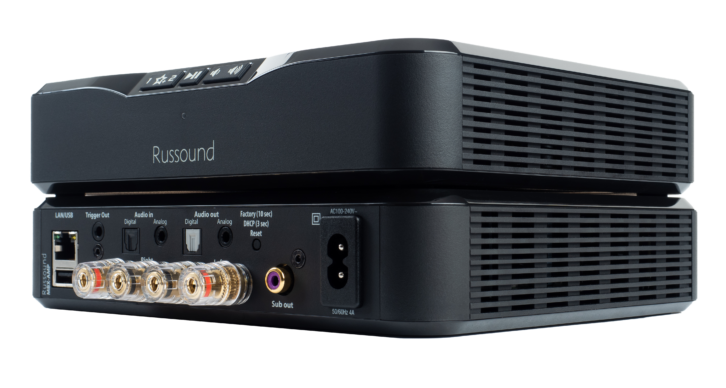
Russound shipped me a variety of components to get the full MBX experience, including two MBX-AMPs, one MBX-PRE, an XTSPlus Touchscreen, and two pairs of its new IC-Series speakers, the flagship IC-630 and entry IC-610. A full MBX system can support up to 32 streaming rooms. Further, MBX is compatible with Russound whole-house systems, providing the perfect streaming add-on to the company’s MCA-Series controllers.
I started by installing the speakers, and right away I noticed the improved design. First, all models now feature just three doglegs instead of four, making for less screwing. Second, the higher-end models feature a new SwiftLock clamping mechanism making for a completely toolless installation, literally at the push of a button. This is clearly engineering that came about from someone who has spent some time balancing a drill while atop a ladder, and your installers will love it. Sadly, I don’t have space in this review to delve deeply into the sound quality, but suffice to say the 610s offer surprisingly rich and full sound that greatly belies their price tag, while the 630s up the detail ante in the upper frequencies thanks to its 1-inch titanium tweeter while also plumbing lower bass frequencies. Both models are definitely worthy of audition for your whole-house installs.
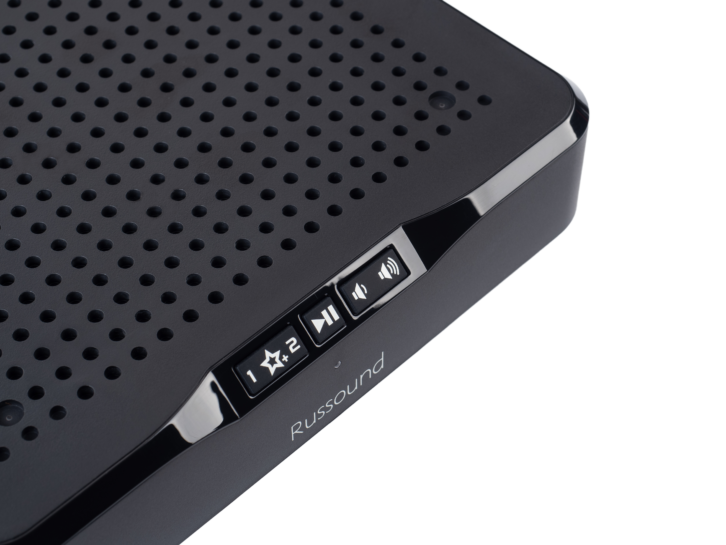
Regarding the RCI program, Russound says, “With the RCI Program, Russound guarantees that a dedicated Russound Certified Installer is fully involved in the installation process of Russound products.” What this means is that all RCI products ship “locked,” and on power up display a message that they won’t operate until an RCI installer connects them to the internet and unlocks them. You can’t ask for a company to support the CI channel more than this!
All MBX components require a network connection, whether hardwired or via dual-band WiFi, and, after unlocking them, I installed the MBX-PRE to my existing amplified housewide distribution system. Both analog and Toslink digital outputs are available, and the PRE can be set for fixed or variable output. I connected the MBX-AMPs to the newly installed IC speakers. The AMPs feature 50×2 amplification (8-ohms), and are 4-ohm stable, meaning they can safely drive two pairs of speakers. One unique and potentially super handy feature of the AMP is that it offers both analog and Toslink digital outputs, which can mirror the output to a local AVR or separate amp to power a large area. The analog can be set to fixed or variable while the digital remains fixed. There’s also an RCA out for connecting a powered subwoofer. The XTSPlus touchscreen is a sleek looking in-wall controller that installs in a single-gang wall box and requires only an Ethernet connection to the network, getting power and data via PoE.
Review: MSE Audio Cherry Bomb and OS-440 Outdoor Audio System
Another of the MBX-AMP’s interesting twists is the external IR sensor included in the box. This simplifies using the MBX-AMP to power TV audio through higher-quality external speakers, with the AMP’s optical audio input configurable to automatically select and power the unit on when it senses a signal. The MBX-AMP learns the TV’s volume and mute commands for simple one-remote operation, and Russound has a library of IR commands that do things such as play favorites or select and play last content from a variety of streaming services. To my knowledge, this is a feature and level of integration offered by no other streamer.
A further thing separating MBX from other systems is its total Switzerland-like approach to streaming audio. Got a client that likes AirPlay? Great. (AirPlay2 is coming via a free firmware update later this year.) Have one that prefers ChromeCast? Cool. Diehard Spotify Connect fan? Done. Like to kick old-school Bluetooth? Yep, supports that, too. MBX also offers native support for TIDAL, Deezer, SiriusXM (including business), TuneIn, vTuner, and Airable, as well as DLNA streaming of music files on the network. And following the current trend, it supports high-res files up to 24-bit/192 kHz. Both units also feature analog and digital audio inputs that can be streamed around the home. In the spirit of the vinyl revolution, I connected a Marantz turntable to the analog input and enjoyed Kind of Blue on vinyl.
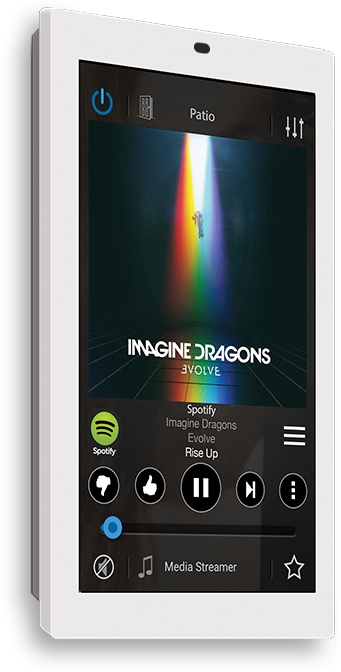
For control, most users will turn to the My Russound app for iOS and Android. There is also a dedicated iPad version that takes advantage of the larger screen real estate. The XTSPlus Touchscreen offers another control option that would be great for upgrading legacy systems. It has a form factor just slightly larger than my iPhone 7, and has a sharp, bright screen. The main benefit to the XTSPlus is that it is far quicker on waking up — a motion sensor actually wakes it up as you approach — and connecting to the system, and is also helpful for people (like guests) who don’t have a phone or the My Russound app. In practice, I used my iPhone around 99 percent of the time.
There are also two very handy front-panel buttons on the MBX units that let you favorite whatever is currently playing (limited to internally streamed sources, UPnP, and Spotify Connect) for rapid recall. This would be a great feature for a guest to easily set up two music options they can recall with the touch of a button, and then adjust the volume with the front-panel buttons.
Now, take this next with a grain of salt…. While the My Russound app is totally serviceable, I found it a bit wanting compared to other systems’ control apps. Now, if this were all I knew, I’m sure I would be totally fine with it, as most of your customers will be, but having played with all of the competitors’ versions, I would currently rank the My Russound app as my least favorite.
Things like moving in and out of rooms, navigating the now playing list, browsing music services, creating/ordering a queue of music, renaming inputs, etc. are just not as graceful as with other control apps. Russound says they expect to address some of these items later this year, and that’s the beauty of software; it’s a living thing that can be constantly improved and upgraded. (Remember the hot mess that was PlayFi on its launch? Well, this is already way better than that.)
While you should be able to group any combination of rooms together within the My Russound app to play synched content across multiple rooms, I was unable to get this feature to work. Russound sent additional hardware, I tried two installation locations, used both wired and wireless connections, and tried three different routers, but I could not get grouped audio to work. Russound says it has thousands of MBX systems installed in the field and has never experienced this bug and was unable to recreate it even with the hardware I used. The company is digging into this issue, and this review will be updated with any changes or resolutions.
Currently MBX doesn’t offer any support for third-party automation systems, but Russound expects to rectify this by CEDIA. The company ultimately expects to have support in place for URC, RTI, Fibaro, Control4, Crestron, and ELAN. And for those who prefer voice control, MBX supports both Amazon Alexa and Google Assistant.
While rated at “just” 50 watts/channel into 8 ohms, I found the MPX-AMP had plenty of gas to drive most speakers you’d throw at it. I even took them into my showroom and connected them to some Monitor Audio Silver bookshelf and tower speakers, where they were able to produce some serious and satisfying low-end.
Ultimately, I love the simplicity of just an MBX-AMP with a nice pair of speakers and a digital audio cable to a TV. With that one wire (plus speaker cabling and power, duh) you have the making of a great little 2-channel system that will let most users listen to anything their heart desires. MBX also provides a great upgrade avenue for existing Russound owners to bring their systems into the 21st Century, enjoying tons of streaming content in whichever manner they choose. As Russound continues developing the MBX platform, it will only continue improving.
603-659-5170 / RUSSOUND.COM
Kudos: RCI program; one-button favorite access; TV audio integration
Concerns: Control app needs some tweaks; issues with Group playback
Product Specs:
- Controllable via XTS Plus in-wall touchscreen or My Russound app (iOS and Android)
- Supports up to 32 streaming audio zones, with any mix of -AMP and -PRE models
- Supports AirPlay, Bluetooth, Chromecast (AirPlay2 firmware update expected in Q4)
- Dual band 802.11AC WiFi
- Native support for TIDAL, Deezer, SiriusXM (including business), TuneIn, Spotify Connect, vTuner, and Airable, DLNA streaming
- Supports streamed network audio files in MP3, WAV, OGG Vorbis, FLAC, AAC, AIFF, AAC+ with resolutions up to 24-bit/192 kHz (MBX-AMP) 70 watts (4 ohms) / 50 watts (8 ohms)
- Works with Amazon Alexa or Google Assistant
- Connections (MBX-AMP): Inputs: RJ45 LAN, USB, 3.5mm IR in, Toslink digital audio, 3.5mm analog audio; Outputs: 3.5mm trigger, 5-way binding post speaker connections, Toslink digital audio, 3.5mm analog audio, RCA subwoofer, detachable power cable. (MBX-PRE): Inputs: RJ45 LAN, USB, Toslink digital audio, 3.5mm analog audio; Outputs: 3.5mm trigger, Toslink digital audio, RCA analog audio, detachable power cable.
Dimensions: 1.75 x 8.25 x 7 inches (HxWxD); Weight 1.5 pounds (MBX-AMP), 1 pound (MBX-PRE)
Want more stories like this delivered to your inbox every day? Then sign up for the free Residential Systems eNewsletter here.

